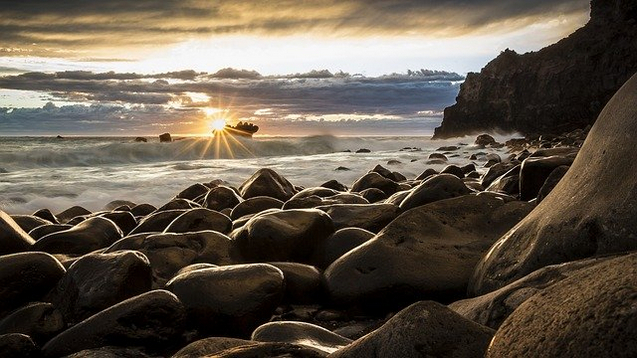Coalition funding for gas exploration in Northern Territory labelled a costly plan ‘for a climate catastrophe’

|
|
Resources minister, Keith Pitt, has repeated claims the Beetaloo
basin is hot property but critics say grants to help explore gas
deposits will return nothing to taxpayers. |
Keith Pitt, the federal minister for resources, water and northern Australia, said the government would offer grants to accelerate exploration and development in the NT’s Beetaloo basin, which lies south of Katherine and has been estimated to hold more than 200,000 petajoules of gas.
He said Beetaloo had been described as “the hottest play on the planet” with the potential to be a world-class gas resource that could transform the NT economy and create 6,000 jobs over 20 years.
The basin’s potential as a gas source has attracted the attention of investors from around the globe, including a company that has Viktor Vekselberg – a Russian oligarch who collects jewel-encrusted Faberge eggs and has been sanctioned by the US – as a major shareholder, and another company, whose ownership is unclear and is registered in the US tax haven state of Delaware.
Pitt said the funding was “a key, early step” in the government’s promised “gas-fired recovery” which received $28.9m in the budget. The grants would apply only to work that occurred before June 2022 and could cover up to 25% of a company’s exploration costs, capped at $7.5m per gas well.
The minister’s statement on Thursday did not mention the government’s climate commitments, which have been repeatedly criticised for their lack of ambition compared with other countries.
Climate campaigners at 350 Australia said the grants for the gas industry were a “shameful waste of public funds”. The group released an analysis that suggested the potential emissions from five gas basins the Morrison government would like to open up could cancel out the government’s climate policies five times over.
Lucy Manne, the group’s chief executive, said the government’s strategic gas basin plans were “an expensive plan for climate catastrophe”. “They should be investing in creating secure jobs in renewable energy, green manufacturing, and planning for an economic recovery that invests in climate solutions,” she said.
Bruce Robertson, a gas analyst with the Institute for Energy Economics and Financial Analysis, said the grants would bring “zero return” for taxpayers.
He said there was at least $11bn in gas assets for sale in Australia, with companies including ExxonMobil and Origin Energy struggling to find buyers, and the NT was a remote market unlikely to produce cheap product unless it was heavily subsidised.
“The gas industry is not even investing itself so why would the federal government?” he said.
Rod Campbell, research director with the Australia Institute, said subsidising oil and gas made little sense from either an economic or climate perspective. He said the gas industry employed fewer than one person for every $1m spent, while investment in health and education employed more than 10.
The Russian investor Vekselberg is, through an investment company, the biggest shareholder in Falcon Oil & Gas, a Canadian company headquartered in Ireland that holds a gas tenement in the basin.
The billionaire was among oligarchs sanctioned by the US Treasury in April 2018 when it froze their US assets and prohibited Americans from doing business with them over a number of matters including the Russian invasion of Ukraine.
Falcon’s second biggest shareholder, Australian company Sweetpea Petroleum, owns 6.28% of the group. It is owned by Longview Petroleum in the US state of Delaware, which is regarded a tax and secrecy haven. Its ultimate owners are unclear.
Last week, the Australian Financial Review reported that Sweetpea is to be sold to another Beetaloo basin player, Tamboran Resources, in a deal that will give Longview almost 30% of Tamboran’s shares and a seat on the board.
Clancy Moore, the national director of the Publish What You Pay coalition, said the government “must rule out subsidies going to companies in the Beetaloo basin using secrecy or low-tax jurisdictions including Delaware and Ireland”.
“The Australian public should be alarmed that precious government money could be flowing to a Russian oligarch and anonymous company owners,” Moore said. “Any company that receives public subsidies must adhere to the highest levels of transparency and these companies are simply hiding in the shadows.”
Concern last week about Australia’s failure to live up to the goals of the 2015 Paris climate agreement led to Scott Morrison being refused a speaking slot at a global climate ambition summit hosted by Britain, France and the UN.
In addition to the gas exploration grants, government MPs including the treasurer, Josh Frydenberg, this week flagged they may set up an inquiry to grill financial regulators and banks over plans to reduce lending to, or insuring of, projects considered an investment risk as the world moves to cut emissions.
The government also announced $2.5bn in support for struggling oil refineries. A leaked draft electric vehicle strategy showed it was not proposing policies to reduce the cost of buying a clean car or to ban the sale of fossil-fuel cars, as planned in other countries including Britain, Japan and Norway.
Links
- Putin's blacklisted oligarch ally to cash in on Morrison government's gas-led recovery
- Scott Morrison’s ‘gas-led recovery’: what is it and will it really make energy cheaper?
- Benefits of Coalition’s ‘gas-led recovery’ overstated and declining usage inevitable, report finds
- Spinning emissions: Australia's climate projections are not what they seem
- Liberal MPs call for government to deny permit renewal that would allow drilling off NSW coastline
- Scott Morrison refuses to commit to net zero emissions target by 2050
- Essential poll: a majority of Coalition voters support a net zero emissions target for 2050
- Morrison government to underwrite two new gas power stations
- Morrison government has not ruled out supporting coal, energy minister says
- Australian government backs coal in defiance of IPCC climate warning
- Government 'clean coal' push would be likely to make Australia's emissions worse
- Australia’s conservative government fiddles on climate policy while the country burns



